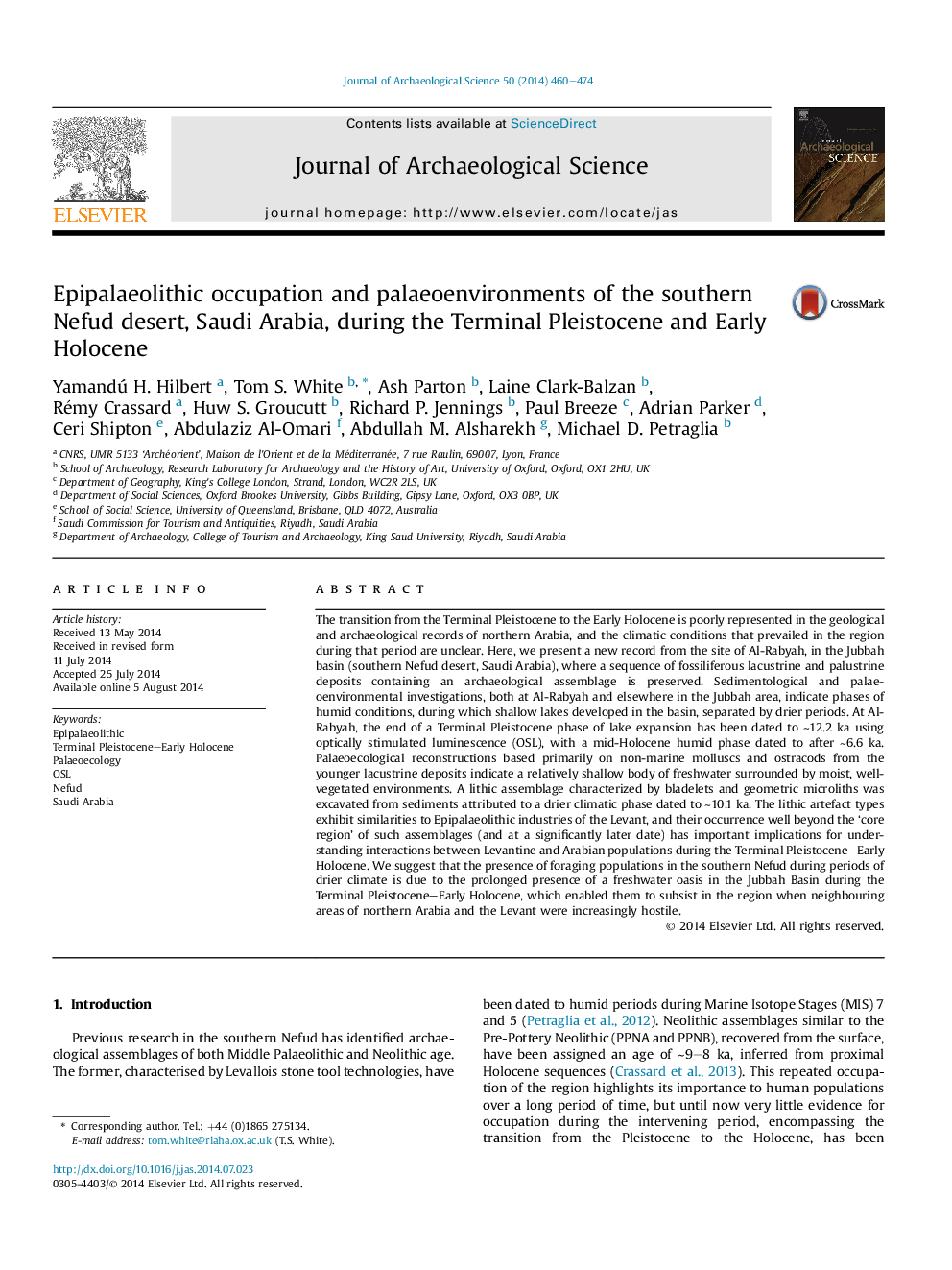| کد مقاله | کد نشریه | سال انتشار | مقاله انگلیسی | نسخه تمام متن |
|---|---|---|---|---|
| 7443070 | 1483910 | 2014 | 15 صفحه PDF | دانلود رایگان |
عنوان انگلیسی مقاله ISI
Epipalaeolithic occupation and palaeoenvironments of the southern Nefud desert, Saudi Arabia, during the Terminal Pleistocene and Early Holocene
ترجمه فارسی عنوان
شغل اپی پالئولیتی و محیط های خلوتی در جنوب خیابان نفود، عربستان سعودی، در طول ترمینال پلیستوسن و اولولوسن
دانلود مقاله + سفارش ترجمه
دانلود مقاله ISI انگلیسی
رایگان برای ایرانیان
موضوعات مرتبط
مهندسی و علوم پایه
مهندسی مواد
دانش مواد (عمومی)
چکیده انگلیسی
The transition from the Terminal Pleistocene to the Early Holocene is poorly represented in the geological and archaeological records of northern Arabia, and the climatic conditions that prevailed in the region during that period are unclear. Here, we present a new record from the site of Al-Rabyah, in the Jubbah basin (southern Nefud desert, Saudi Arabia), where a sequence of fossiliferous lacustrine and palustrine deposits containing an archaeological assemblage is preserved. Sedimentological and palaeoenvironmental investigations, both at Al-Rabyah and elsewhere in the Jubbah area, indicate phases of humid conditions, during which shallow lakes developed in the basin, separated by drier periods. At Al-Rabyah, the end of a Terminal Pleistocene phase of lake expansion has been dated to â¼12.2Â ka using optically stimulated luminescence (OSL), with a mid-Holocene humid phase dated to after â¼6.6Â ka. Palaeoecological reconstructions based primarily on non-marine molluscs and ostracods from the younger lacustrine deposits indicate a relatively shallow body of freshwater surrounded by moist, well-vegetated environments. A lithic assemblage characterized by bladelets and geometric microliths was excavated from sediments attributed to a drier climatic phase dated to â¼10.1Â ka. The lithic artefact types exhibit similarities to Epipalaeolithic industries of the Levant, and their occurrence well beyond the 'core region' of such assemblages (and at a significantly later date) has important implications for understanding interactions between Levantine and Arabian populations during the Terminal Pleistocene-Early Holocene. We suggest that the presence of foraging populations in the southern Nefud during periods of drier climate is due to the prolonged presence of a freshwater oasis in the Jubbah Basin during the Terminal Pleistocene-Early Holocene, which enabled them to subsist in the region when neighbouring areas of northern Arabia and the Levant were increasingly hostile.
ناشر
Database: Elsevier - ScienceDirect (ساینس دایرکت)
Journal: Journal of Archaeological Science - Volume 50, October 2014, Pages 460-474
Journal: Journal of Archaeological Science - Volume 50, October 2014, Pages 460-474
نویسندگان
Yamandú H. Hilbert, Tom S. White, Ash Parton, Laine Clark-Balzan, Rémy Crassard, Huw S. Groucutt, Richard P. Jennings, Paul Breeze, Adrian Parker, Ceri Shipton, Abdulaziz Al-Omari, Abdullah M. Alsharekh, Michael D. Petraglia,
